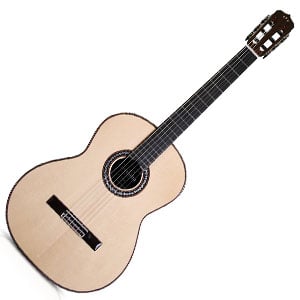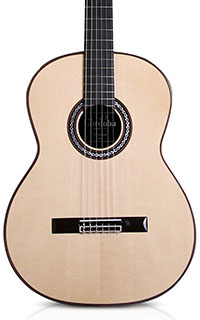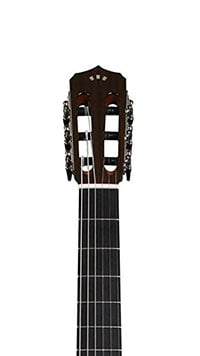- Home
- Instruments
- Gear
- Recording
- Lessons
- Reviews
- Blog


| Body And Neck: |  |
| Hardware: |  |
| Sound: |  |
| Value: |  |
Some guitarists fit into neat categories – electric shredders, steel-string strummers, nylon-string fingerstylists. Then there are some unique players, who like some aspects of one style, with parts of another thrown in.
Enter, the Cordoba C10 Crossover, which – as the name suggests – is a hybrid for those guitarists who love the style and sound of a traditional classical guitar, but who prefer the feel and playability of a steel-string model. It comes in at the lower end of our mid-range under $1500 chart – so how does it feel, sound and perform?

The Cordoba C10 Crossover is a real beauty, with all the traditional style points a classical guitar should offer, but with a few key tweaks. There’s a solid fan-braced European spruce top, with back and sides made from solid Indian rosewood, while the top is also bound with Indian rosewood – all enveloped in a high-gloss finish. The attractive detailing continues with a mother-of-pearl and ebony vintage Domingo Esteso weave rosette around the soundhole.
The neck is where we see the biggest changes in comparison to a standard classical model. It’s made from mahogany, with a very comfortable and familiar (for steel-string guitarists) C-shaped profile and a slim 1.88” nut width. On this you’ll find a dark ebony fretboard with a curved radius (instead of a flat fretboard), with 19 frets. So, a relatively traditional body and a very playable neck for any guitarist.

If you’ve not already gathered, this is a solely acoustic model, so there are no pickups or electronics to speak of. But there is some good hardware and accessories to note. Such as Cordoba’s elegant silver tuning machines, with a gear ratio of 14:1 and black button tuning keys. The bridge is made of Indian rosewood with a bone saddle, and a bone nut with 1.89” spacing. The C10 Crossover also comes shipped with Savarez Cristal Corum strings as standard, along with Cordoba’s lightweight Polyfoam case, which is a kind of hybrid between a hardshell case and gigbag – a very appropriate case for this guitar!
Players interested in this unique model will be pleased to find out that, despite the differences in neck, the Crossover sounds almost identical to the original spruce C10 – which is pretty flawless. The European spruce gives a smooth, rich and balanced tone, while the fan bracing provides more response, resulting in a louder output and lots of resonance. Great for jazz, fingerstyle and classical music, as you’d expect.
This crossover style won’t impress the more traditional classical guitarist, but they are not the target audience. With the heavily tweaked fusion neck and such smooth playability, this would be a very smart choice for steel-string guitarists making the move into the world of classical guitars, or even players with smaller hands. As part of Cordoba’s respected Chinese-made Luthier Series the quality is excellent and the solid woods allow the guitar to sing, proving very good value.
For more info about the Cordoba C10 Crossover, click here.
For more acoustic guitar under $1500 you might like, click here.

J says
I own this instrument and was testing different string sets for a better sound. Tried some Savarez CC normal tension and D’Addario Pro Arte extra high tension. Both were a disappointment. I just strung it up with a set of Savarez Alliance 500AJ. Wow! This thing plays like a Stradivarius. Extremely smooth and LOUD, resonant, beautiful. Near perfect intonation. It sounds and plays better than some $3 -5K concert instruments I have tried. The trebles are thinner than usual and I play with fingertips (no nails). Maybe that is part of the equation, but just wanter to share for anyone else who might be tinkering with string sets.
Cheers,
T
Richie says
Hi. I have a question. Could a man with average-sized hands wrap his thumb around this to play chords, fretting both the 6th and 5th strings, or is the neck still too wide for that? Thanks